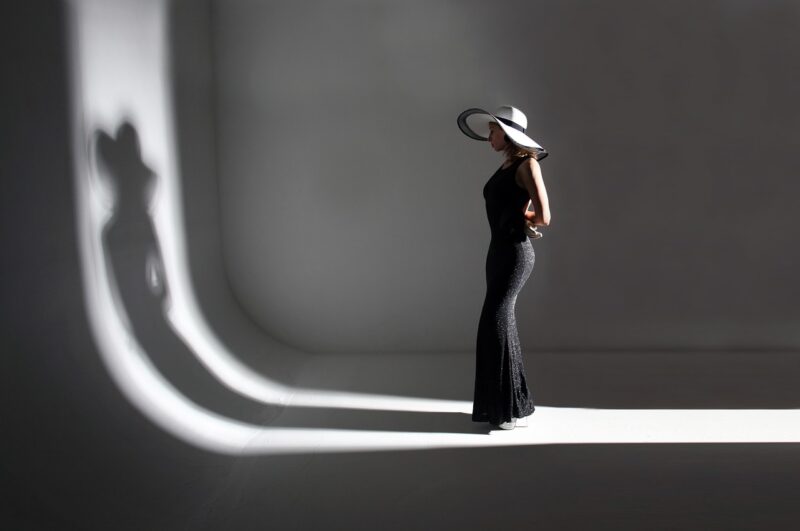The Appeal of Retro Fashion in Modern Cinema and Culture
November 15, 2024

Fashion has a unique ability to transcend time, often drawing inspiration from various historical eras to create a distinct aesthetic that resonates with contemporary audiences. In recent years, retro fashion has surged in popularity, captivating not only the realms of personal style but significantly influencing modern cinema as well. This article delves into the alluring appeal of retro fashion, exploring its impact on film, its cultural significance, and why it continues to enchant the masses.
1. A Brief Overview of Retro Fashion
Retro fashion refers to clothing styles that primarily draw influence from previous decades—be it the roaring twenties, the swinging sixties, or the funky seventies. The allure of retro fashion lies in its nostalgia, offering a deeper connection to the past, often evoking a sense of romanticism and nostalgia for times gone by.
Throughout the years, fashion has evolved, but the cyclical nature of trends means that styles from the past are often revived, leading to the modern interpretation of retro fashion. This revival can take many forms—from vintage shops laden with garments from decades before to high-street fashion brands producing lines that mimic these bygone looks.
As cinema often serves as a reflection of cultural movements and societal changes, it plays a pivotal role in popularizing retro fashion and making it accessible to broader audiences.
2. The Cinematic Influence of Retro Fashion
Retro fashion has made a significant impact on modern cinema, with several films successfully showcasing vintage styles, resulting in a resurgence of interest for these looks within popular culture. Here are a few noteworthy examples:
- The Great Gatsby (2013): Baz Luhrmann’s visually stunning adaptation of F. Scott Fitzgerald’s classic novel offered a feast for the eyes, with its extravagant flapper dresses, art deco suits, and lavish accessories. The film reignited interest in the 1920s, prompting a revival of glittering parties and chic styles reminiscent of the Jazz Age.
- Once Upon a Time in Hollywood (2019): Quentin Tarantino’s love letter to the late 1960s captured the era’s carefree lifestyle through fashion, embodying the essence of the time. The film featured vibrant colors, flowing fabrics, and iconic hairstyles, transporting viewers to an age defined by counterculture and rebellion.
- La La Land (2016): The musical film encapsulated the magic of Los Angeles while paying homage to classic Hollywood. From Emma Stone’s vintage gowns to Ryan Gosling’s tailored suits, the film created an enchanting aesthetic that resonated with fans of old-school glamour.
These films showcase how retro fashion can elevate a storyline, establishing a mood that resonates emotionally with the audience while providing a visual feast of inspiration.
3. Cultural Significance of Retro Fashion
The resurgence of retro fashion is not merely a consequence of trends but acts as a cultural commentary reflecting the societal dynamics of today.
- Nostalgia and Escapism: In a world full of uncertainty, many people have turned to nostalgia as a comfort. Retro fashion offers a sense of escapism, allowing individuals to experience an idealized version of the past. This longing becomes evident through fashion choices, where vintage styles symbolize a simpler, more romantic time.
- Sustainability and Vintage Resurgence: The push for sustainability in fashion has led to a growing interest in vintage clothing as consumers seek to reduce their environmental footprint. By resurrecting retro styles, individuals embrace circular fashion, reiterating the adage that fashion is indeed cyclical.
- Identity and Self-Expression: Retro fashion serves as a powerful tool for self-expression. By donning styles from eras gone by, individuals can convey aspects of their identity, selecting pieces that resonate with their personality, values, or aesthetic preferences. From pin-up styles to grunge looks, retro fashion allows for the creation of unique, personalized statements.
These facets of cultural significance demonstrate why retro fashion continues to thrive, evolving along with society while maintaining its core allure.
4. Modern Influencers and Retro Fashion
No discussion about retro fashion would be complete without mentioning the impact of contemporary influencers and public figures.
Social media platforms, especially Instagram and TikTok, have enabled enthusiasts to showcase their unique styles, thus fueling the widespread popularity of retro fashion. Influencers like Dita Von Teese, who embodies vintage glamour, and others who adopt unique aesthetics from past decades have amplified awareness and appreciation for these timeless looks.
As these personalities gain traction in mainstream culture, more people feel empowered to explore and adopt retro fashion. The accessibility of vintage finds through charity shops, online marketplaces, and thrift stores has facilitated this trend, democratizing fashion in a way that encourages sustainable shopping habits.
5. Conclusion: The Enduring Allure of Retro Fashion
Through cinema and culture, retro fashion has firmly established its place in modern society. Its appeal lies not only in its aesthetic beauty but also in its deep-rooted significance reflecting our collective memories and experiences. In our quest for authenticity, sustainability, and self-expression, retro fashion emerges as a powerful statement—provoking conversations and inspiring creativity.
As audiences continue to embrace nostalgia, retro fashion remains an ever-relevant topic worthy of exploration and appreciation. Whether inspired by films, nostalgic memories, or the exceptional artistry behind vintage styles, the allure of retro fashion in modern cinema and culture is a compelling testament to its enduring charm.







